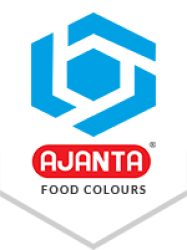_1738231989.jpg)
The market for frozen food is rapidly increasing around the world. Frozen foods are a convenient and reliable way to store food products for a longer time. However, during the storage of frozen food, they lost the appearance that made them ugly. Manufacturers have to maintain the appearance of their frozen food products to increase sales. They can solve this problem by using quality food colours in their frozen food products. In this article, we gonna talk about the importance of food colours in frozen food products, their types, and regulatory guidelines on them, and also know from where manufacturers can source quality food colours for their products.
Why Are Food Colours Important in Frozen Foods?
Colours play a crucial role in the sales of frozen food products. They are beneficial for frozen foods in various ways such as:
Enhanced Visual Appeal: Food colours enhance the visual appeal of frozen food products and maintain their appearance during their manufacturing and storage. These vibrant colours are required for a range of frozen food products including frozen vegetables, meats, peas, fast foods, dairy products, and, pre-cooked food.
Consistent Quality Perception: Consistent and vibrant colour over every product batch adds value for products that help in product sales and brand recognition. People trust products that look similar for a long time, any minor change even colour shade can reduce the customer's trust which can impact product sales.
Brand Differentiation: Colours allow frozen food manufacturers to make products that look different from their competitor’s products. These different coloured products attract the attention of consumers and create a brand value for the product which ultimately increases product sales and brand recognition on the market.
Customer Satisfaction: Studies have shown that vibrant and brightly coloured frozen food products impact the taste and purchasing decisions of consumers. Visually appealing food products enhance the overall experience of customers and make them happy.
Types of Food Colours Used in Frozen Foods
In frozen foods, colours are used to give them a visually appealing final look. There are two types of colours that are primarily used in frozen food products - natural food colours and synthetic food colours.
Synthetic Food Colours
Synthetic food colours are prepared in the laboratories from coal tar derivatives. These colours are known for providing stable and consistent colorants to products that do not fade or change over time. Synthetic food colours come in various forms such as granular, powder, lake color (water-insoluble), FD&C colors, and D&C colours which makes them versatile for use in a range of frozen food products. By using synthetic food colours in their frozen food products, manufacturers give a vibrant and attractive final look to a range of food products, including frozen foods. This is always a favored option of food product manufacturers compared to other colour alternatives like natural food colours. Some of the widely used synthetic food colours in frozen food products include tartrazine, sunset yellow FCF, brilliant blue, and Allura red.
Natural Food Colours
Natural food colours are the oldest colorants used to give colour to food products. It is derived from plants, animals, algae, insects, and fruits. Some of the commonly used natural food colours include caramel, annatto, curcumin, red beetroot, and paprika. However, natural food colours are dull over time, which is why many manufacturers around the world prefer synthetic food colours to add colourants to their frozen food products.
Regulatory Compliance for Food Colours
Colours, whether synthetic or natural, must be approved by the country's governmental body that checks the quality and safety of colours for human consumption in frozen food products. Manufacturers have to follow all the regulatory guidelines set by the regulatory authorities to sell their frozen food products in the market without any legal problems and also export them to international markets. These authoritative bodies include the Food and Drug Administration (FDA) in the United States of America, the European Food Safety Authority in the European Union, and the Food Safety and Standards Authority of India in India. These bodies also conduct inspections, sampling, testing, and enforcement actions from time to time to ensure the quality and safety of colours in frozen food products.
Conclusion
For a frozen food product to sell, it must be colourful and thus food colors are a must. Synthetic food colour is the most popular option as it is stable, cost-effective and provides an appealing look to the product which is unlike natural food colours because natural colors tend to fade away with time. In order to increase brand recognition and sales, frozen food producers can purchase vibrant hues from trustworthy manufacturers that will serve the purpose.
Ajanta Food Colours is a leading synthetic food colours manufacturing company in India that offers a wide range of high-quality food colours for frozen food products. For the quality, and safety of their colours that fulfills all the regulatory standards set by various government bodies around the world, it received various wads and certificates from India as well as from other countries where Ajanta exports its high-quality and FDA-approved food colours. These awards and certificates show Ajanta’s expertise and over 75 years of legacy in the field of synthetic food colours.




